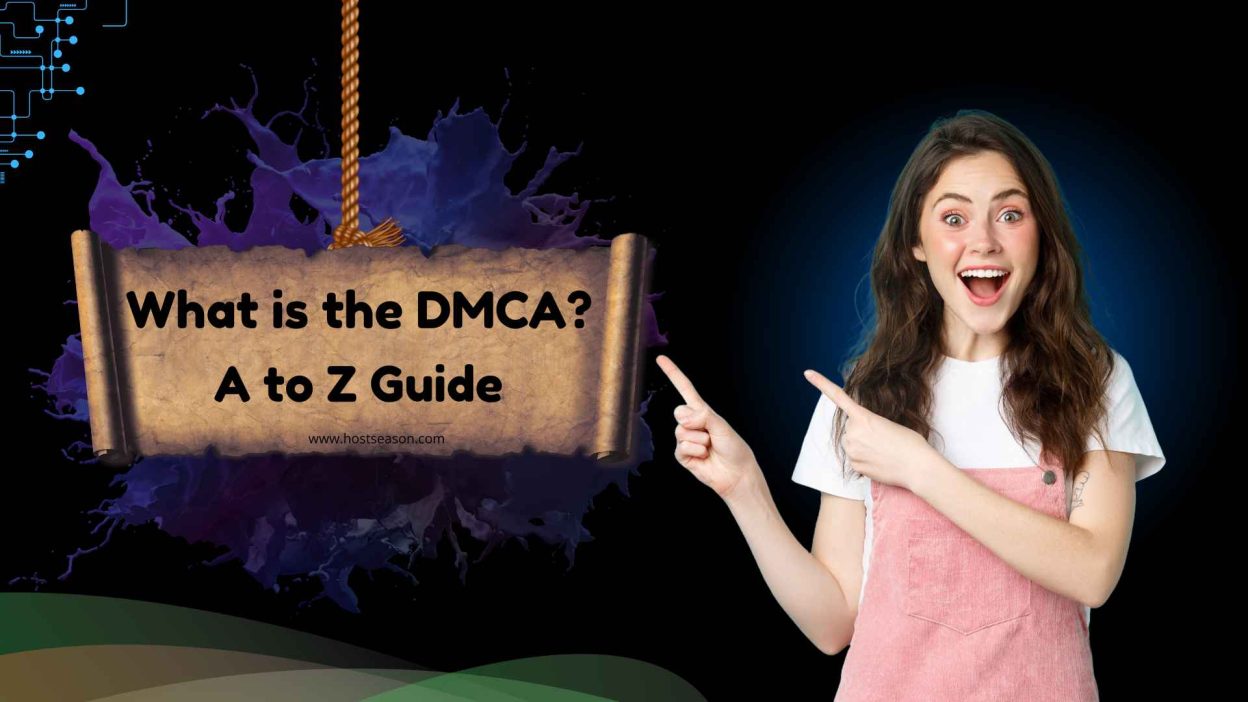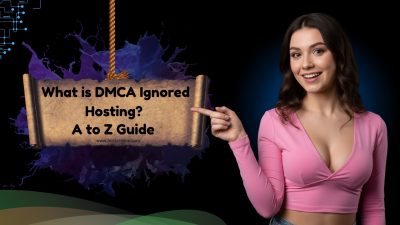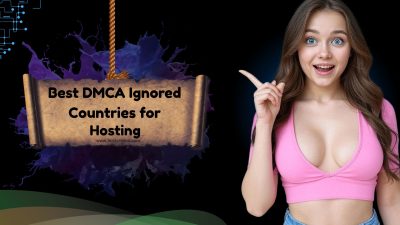The internet makes sharing creative work easier than ever, from uploading music tracks, viral videos, high quality photos, podcasts, to publishing articles online. But this freedom also raises questions about copyright and protecting original content.
The Digital Millennium Copyright Act (DMCA) helps creators safeguard their work while providing platforms a legal framework to operate safely. Creators rely on the DMCA to control how their songs, videos, photos, podcasts, or articles are used.
Real cases, like a home video being taken down without consent or photographers having images reposted without permission, highlight how the law protects creative rights while supporting fair use for commentary, parody, or education. Platforms like YouTube, Instagram, Spotify, and Medium follow these rules, showing its global reach.
Understanding the DMCA allows you to share your work confidently, respect others’ content, and engage safely online, whether you’re posting music, videos, photos, audio, or written content. This ensures a trustworthy and structured online environment for everyone.
Table Of Content
- What is the DMCA?
- Why Was the DMCA Created?
- Key Provisions of the DMCA
- How the DMCA Takedown Process Works
- How the DMCA Shapes the Internet Today
- Criticisms and Challenges of the DMCA
- DMCA vs DMCA Ignored Hosting
- The DMCA Today – How it Has Evolved
- Why the DMCA Matters to You
- FAQs
- Conclusion
What is the DMCA?
The Digital Millennium Copyright Act (DMCA) is a U.S. copyright law signed in 1998 by President Bill Clinton. At that time, the internet was growing rapidly, and existing copyright rules could not manage the challenges of online sharing, streaming, and piracy.
The law was created to give creators control over their work, including music, films, books, software, photos, and videos, and to prevent unauthorized copying or distribution.
Even though the law applies in the United States, it impacts creators, websites, and businesses worldwide.

Major online platforms such as social media networks, hosting providers, and search engines follow DMCA rules because of their connections to U.S. based systems. Websites outside the U.S. often comply to avoid removal of content or penalties.
Key aspects of the DMCA include:
- Protects Creative Work – Authors, musicians, filmmakers, and digital creators gain the right to manage how their content is used online.
- Takedown Process – Copyright owners can request that content using their work without permission is removed from platforms.
- Safe Harbor for Platforms – Platforms like YouTube or Facebook avoid legal responsibility when they act quickly on valid removal requests.
- Global Influence – Many websites worldwide adopt DMCA practices to remain accessible and prevent legal issues.
The DMCA continues to play a crucial role in shaping online content. It provides creators protection, allows platforms to operate safely, and helps users engage and share content within clear and structured rules.
This balance strengthens creative rights and ensures a more secure online environment for everyone.
Why Was the DMCA Created?
During the 1990s, the internet was changing how people accessed and shared content. For the first time, songs, movies, books, and even software could be copied and shared online with almost no restrictions.
While this felt like freedom for users, it quickly turned into a big problem for industries that were losing billions of dollars to digital piracy. The copyright laws from the 1970s were outdated and could not handle these new challenges.
To solve this, the DMCA was introduced in 1998. Its purpose was to modernize copyright protection and create clear rules for the digital age.
The law had several important goals:
- Protect Digital Content: The DMCA gave creators stronger rights over their work, ensuring that music, films, software, and other digital products couldn’t be freely copied or pirated.
- Prevent Breaking of Digital Locks (DRM): Many companies use Digital Rights Management (DRM) to protect their content, such as preventing movies or games from being copied. The DMCA made it illegal to break these locks.
- Provide Legal Protection for Platforms: Without the DMCA, platforms like YouTube, Facebook, and Google would have faced endless lawsuits over user uploaded content. The law gave them a “safe harbor,” meaning they wouldn’t be punished as long as they removed infringing content when notified.
- Balance Copyright and Free Speech: The DMCA tried to protect both sides giving creators control while still allowing fair use, commentary, and criticism to thrive online.
This balance is the reason platforms like YouTube and Facebook were able to grow. They could support user generated content while also respecting the rights of copyright holders. Even today, this foundation continues to shape how the internet works.
Key Provisions of the DMCA
The Digital Millennium Copyright Act (DMCA) is a broad law, but several sections are especially important for how the internet works today. These key provisions define how creators, platforms, and users interact with copyrighted material.
1. Safe Harbor (Section 512)
One of the most significant parts of the DMCA is the Safe Harbor rule. It protects online platforms, hosting providers, and social networks from being held directly responsible for every piece of content uploaded by users. However, this protection only applies if platforms:
- Remove infringing content quickly after receiving a valid takedown notice.
- Avoid knowingly hosting pirated material or turning a blind eye to copyright abuse.
- Act against repeat offenders, such as suspending accounts that repeatedly upload pirated content.
This is why services like YouTube, Facebook, and TikTok can host billions of uploads. They are not sued for each copyright violation as long as they comply with DMCA rules. Without Safe Harbor, modern user generated platforms would not exist in their current form.
2. Anti Circumvention (Section 1201)
This provision makes it illegal to break digital locks (Digital Rights Management or DRM). Examples include cracking DVD protection, bypassing restrictions in eBooks, or hacking streaming services to copy shows.
While this helps protect creators from piracy, it has faced criticism. Many argue that it also limits fair use, research, education, and even simple device repair.
3. Other Key Elements
- Exemptions: Every three years, the U.S. Copyright Office reviews and grants exceptions. Recent updates have included exemptions for device repair, cybersecurity research, and unlocking smartphones areas that are increasingly relevant in 2025.
- Takedown Notices: Copyright holders can demand removal of infringing material. At the same time, users who believe their content was removed unfairly can submit a counter notice to challenge it.
- Penalties: Serious violations, especially repeated piracy or breaking DRM protections, can result in heavy fines or even criminal charges.
Together, these provisions explain why the DMCA is still central to how the internet operates today protecting creators, guiding platforms, and setting boundaries for users.
How the DMCA Takedown Process Works
The DMCA process was designed to give copyright owners a straightforward way to protect their work online, while also giving users a chance to defend themselves if their content is removed unfairly. Here’s how it typically works in practice:
1. Notice (Takedown Request)
A copyright owner such as a musician, filmmaker, or publisher discovers their work being used without permission. They send a DMCA takedown notice to the website, hosting provider, or platform where the content is posted. The notice must include details of the copyrighted work, the infringing content, and proof of ownership.
2. Removal of Content
To stay protected under the Safe Harbor rule, the platform or hosting provider removes the content quickly after receiving the notice. This shields the platform from legal liability, even if the user uploaded the content without bad intent.
3. Counter Notice by the Uploader
If the uploader believes the content was removed unfairly for example, because it falls under fair use (such as commentary, parody, or education) they can submit a counter notice. This is a legal request to restore the content.
4. Legal Action Timeline
Once a counter notice is filed, the copyright owner has 10-14 business days to take the matter to court. If they do not, the platform can legally restore the content.
5. Repeat Violations
Platforms are also required to suspend or remove accounts that repeatedly break copyright rules. This is why services like YouTube issue “strikes” against accounts that face multiple takedown notices.
Example:
A famous case highlighting this process was Stephanie Lenz vs. Universal Music (2007). Lenz uploaded a short home video of her child dancing to Prince’s “Let’s Go Crazy.” Universal sent a takedown notice, but Lenz argued her use was fair use.
The court sided with her, and the case became a landmark example of how the DMCA can be misused and how important it is to balance copyright protection with free expression.
How the DMCA Shapes the Internet Today
More than two decades after it was passed, the DMCA still plays a major role in how the internet functions. Its influence can be seen in several ways:
1. Protecting Online Platforms
Thanks to the Safe Harbor provisions, platforms like YouTube, Reddit, and TikTok can host billions of uploads without facing lawsuits for every copyright violation. As long as they respond quickly to takedown requests and act against repeat offenders, they remain legally protected.
2. Supporting Creators Worldwide
The DMCA gives artists, musicians, writers, and software developers tools to safeguard their intellectual property. Because most large platforms comply with U.S. law, creators can use the DMCA system to protect their work on a global scale, not just within the United States.
3. Encouraging Offshore Hosting
Some website owners prefer DMCA ignored hosting in countries where U.S. takedown requests are not enforced. This is common for sites dealing with sensitive political topics, streaming content, or adult entertainment. While offshore hosting can provide more freedom, local laws in those countries still apply.
4. Raising New Copyright Questions
With the rise of digital tools, streaming services, and AI generated content, the boundaries of copyright law are constantly being tested. Lawmakers, platforms, and creators continue to debate how the DMCA should evolve to meet these modern challenges.
Criticisms and Challenges of the DMCA
While the DMCA is powerful and effective, it has also been the subject of ongoing criticism.
Some of the main issues include:
- Abuse of Takedown Requests – Companies have sometimes used DMCA notices to silence critics, competitors, or unfavorable reviews rather than to protect real copyright interests.
- Restrictions on Fair Use – Anti circumvention rules often make it difficult for educators, researchers, and journalists to use content for legitimate purposes such as teaching, study, or analysis.
- Global Impact – Even people outside the U.S. are affected, since most major online platforms follow DMCA rules regardless of where their users live.
- Free Speech Concerns – The fear of takedowns leads many creators to self censor and avoid content that could potentially trigger a copyright complaint.
- Complex Appeals – Filing a counter notice or defending against a wrongful takedown can be legally complicated and expensive, leaving smaller creators at a disadvantage.
DMCA vs DMCA Ignored Hosting
The DMCA sets clear rules for how hosting providers and platforms must respond to copyright complaints.
However, because these rules can be strict, a separate category known as DMCA ignored hosting has grown in popularity. Both approaches serve different needs, and understanding the difference is important for anyone running a website.
DMCA Compliant Hosting
- What it means: Hosting providers in the U.S. (and in countries that cooperate with U.S. copyright enforcement) must remove or disable access to content once they receive a valid takedown notice.
- Who it’s for: Business websites, e-commerce stores, blogs, and professional portfolios benefit from this option because it’s legally safe and reliable.
- Advantages: Strong legal protection, predictable service, and compliance with international copyright laws.
DMCA Ignored Hosting
- What it means: Some hosting providers in countries like the Netherlands, Malaysia, Ukraine, Moldova, and Russia openly market themselves as “DMCA ignored.” This means they don’t act on U.S. based copyright notices.
- Features: These providers often offer privacy focused services such as anonymous sign ups, crypto payment options, and servers located in regions less affected by U.S. copyright laws.
- Common Uses: Popular with sites that publish political commentary, adult content, or streaming related material that might face frequent takedown requests in the U.S.
- Limitations: Local laws still apply. Illegal content such as scams, fraud, phishing, or exploitation is not tolerated and will be removed even in offshore jurisdictions.
The DMCA Today – How it Has Evolved
Over the years, the DMCA has been updated to meet new digital challenges. Some important developments include:
- CASE Act (Copyright Alternative in Small Claims Enforcement): Introduced a system for creators to resolve copyright disputes without the high costs of federal lawsuits. This makes enforcement more accessible, especially for small creators.
- Regular Exemptions: Every three years, the U.S. Copyright Office adds new exemptions. Recent updates expanded rights for device repair, security research, accessibility improvements, and some AI training uses.
- Offshore Growth: As copyright enforcement becomes stricter in traditional regions, newer hubs like Moldova and Bulgaria are emerging as alternatives for offshore hosting.
These changes show how the law is adapting but also highlight ongoing debates around fair use, privacy, and free expression.
Why the DMCA Matters to You
No matter who you are, the DMCA affects your online activity in some way:
- For Creators: It provides tools to protect original work, but it also means you need to respect others’ copyrights when remixing, reviewing, or creating derivative content.
- For Website Owners: If you host in the U.S. or another DMCA compliant country, you must respond to takedown notices. If your content is sensitive or controversial, you may explore offshore options but you still need to respect local laws.
- For Everyday Users: It explains why your favorite memes, reaction videos, or fan made edits sometimes disappear overnight. Platforms remove them to comply with takedown rules and avoid liability.
FAQs
1. Does the DMCA apply outside the United States?
Even though the DMCA is a U.S. law, its impact is worldwide. This is because most major platforms like YouTube, Instagram, Facebook, and Google are American companies. So, if you post something anywhere in the world that breaks the DMCA, it can still be taken down.
2. What is a DMCA takedown notice?
A DMCA takedown notice is basically a complaint from the owner of some content like a song, photo, or video asking a website or platform to remove it because it was uploaded without permission.
3. How long does it take for content to be removed after a DMCA notice?
Most websites act quickly once they get a proper notice. In many cases, the content gets taken down within one or two days.
4. Can I fight a wrongful DMCA takedown?
Yes you can. If your video, article, or photo was removed unfairly, you can file what’s called a counter notice. This tells the platform you believe your use was legal (like fair use or parody). If the copyright owner doesn’t sue within about two weeks, your content can be restored.
5. What happens if I ignore a DMCA takedown notice?
Ignoring a DMCA notice is risky. Your content may stay down, your account could be suspended, or you might even face legal trouble. If you run a website, your hosting provider could shut down your site.
6. What is the difference between DMCA compliant and DMCA ignored hosting?
• DMCA compliant hosting: These hosting companies follow DMCA rules and will remove content when they get a notice. This is the safer choice for businesses, blogs, or online stores.
• DMCA ignored hosting: These are servers in certain countries that don’t respond to U.S. DMCA requests. They allow more freedom, but local laws in those countries still apply.
7. Does the DMCA protect fair use?
In theory yes. The law allows exceptions like commentary, reviews, education, or parody. But in practice, platforms often take down the content first to be safe, and then you have to prove it was fair use.
8. Can the DMCA be misused?
Unfortunately, yes. Some people or companies send fake or unfair takedown notices just to silence critics or remove competition. While this is not allowed, fighting back can be difficult and expensive for smaller creators.
9. Why is the DMCA still important in 2025?
Because it sets the basic rules of how online content works. It protects creators from piracy, gives platforms a safe way to handle user uploads, and helps keep the internet structured. With streaming, AI content, and new digital tools, the DMCA is still very relevant today.
Conclusion
The Digital Millennium Copyright Act (DMCA), introduced in 1998, continues to shape how the internet operates. It protects creators, provides online platforms with a framework to stay compliant, and defines how copyrighted content is managed in the digital space.
The law isn’t perfect, many believe it sometimes limits fair use and freedom of expression. With fast moving technologies such as streaming, AI, and new digital tools, the DMCA is constantly being challenged and updated to stay relevant.
For creators, website owners, and everyday users, understanding how the DMCA works is essential. It not only helps safeguard original work but also allows you to publish, share, and engage online with greater awareness and confidence.


